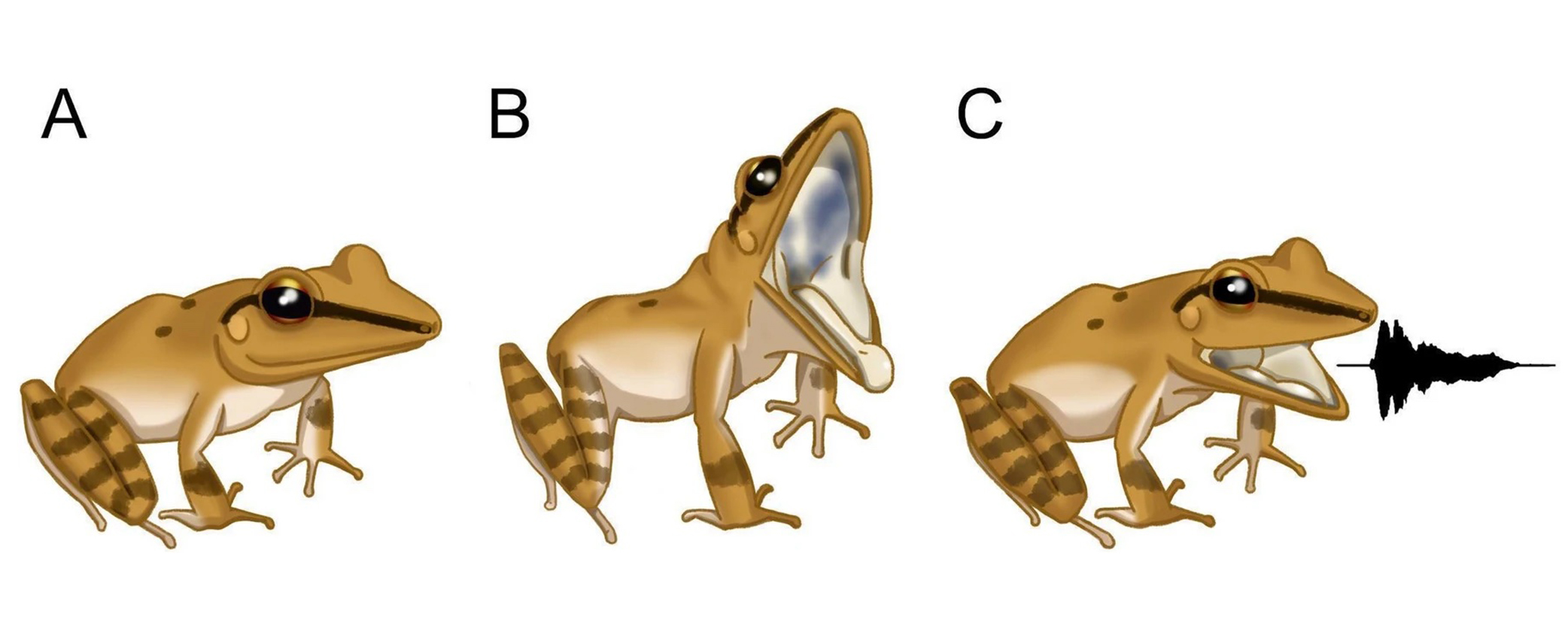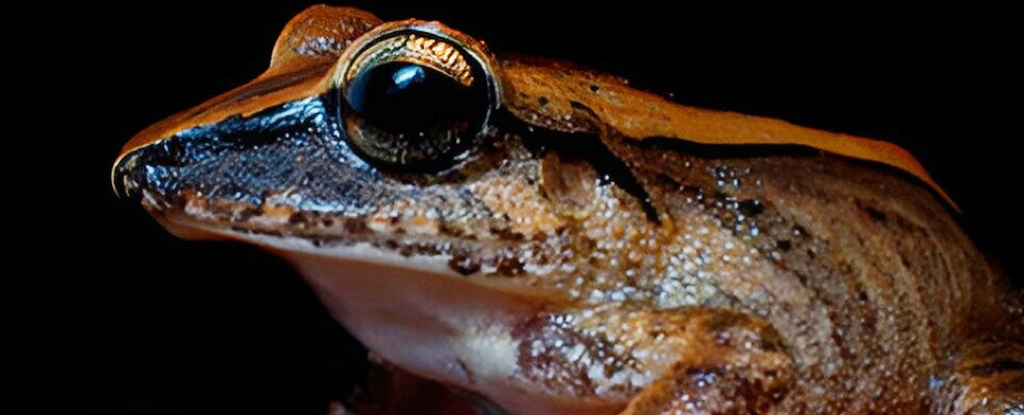The Brazilian Atlantic Rainforest is filled with the ear-piercing ‘screams’ of a tiny amphibian in distress, but until now, we humans have been oblivious to their cries.
For the first time, researchers have recorded South American frogs crying out at a frequency that totally bypasses the human ear – but which would be quite unpleasant to animals with the right kind of receivers.
The leaf litter frog (Haddadus binotatus) is the most abundant species of frog in the forest community. Though abundant, they’re tiny – the largest of the species are females, and even they that barely reach 64 millimeters (2.5 inches) in length.
When attacked, they can’t exactly fight. So they scream, emitting the ultrasonic distress call by way of defense.
We’ve known for a while that some frogs use their pipes to signal distress, warnings and alarms, and while a few studies have found frogs may be capable of emitting ultrasounds, this new study confirms it.
“Some potential predators of amphibians, such as bats, rodents, and small primates, are able to emit and hear sounds at this frequency, which humans can’t,” says behavioral ecologist Ubiratã Ferreira Souza, from the State University of Campina in Brazil.
“One of our hypotheses is that the distress call is addressed to some of these [animals], but it could also be the case that the broad frequency band is generalist in the sense that it’s supposed to scare as many predators as possible.”
The cry is part of an entire sequence of defensive behaviors, in which the leaf litter frog arches its back while raising the front of its body, mouth gaping, as if in preparation to let out the blood-curdling scream that is finally emitted as the frog partially closes its maw.

And while humans can only hear sounds around 20 kilohertz and under, the software Souza and team used to capture the froggy battle cry showed it ranged from seven through to 44 kilohertz.
They think this broad range of frequencies – along with the frog’s intimidating stance – is meant to deter a wide range of predators from messing with this tiny terror. Since other frogs have been found capable of such mighty yells in other parts of the world, the behavior might be more widespread than we realise.
“In light of the fact that amphibian diversity in Brazil is the highest in the world, with more than 2,000 species described, it wouldn’t be surprising to find that other frogs also emit sounds at these frequencies,” says State University of Campina ecologist Mariana Retuci Pontes.
She reports observing similar behavior when handling a separate species of frog during a visit to the Upper Ribeira State Tourism Park in January 2023, although she was unable to confirm the presence of an ultrasound frequency band in the video that she recorded.
The researchers say the exact mechanisms by which the cries deter predators is unclear, although they suggest it may be to either scare them off directly, or even to attract the predator’s natural enemies.
“Could it be the case that the call is meant to attract an owl that will attack a snake that’s about to eat the frog?” Souza suggests.
This research was published in the journal acta ethologica.





